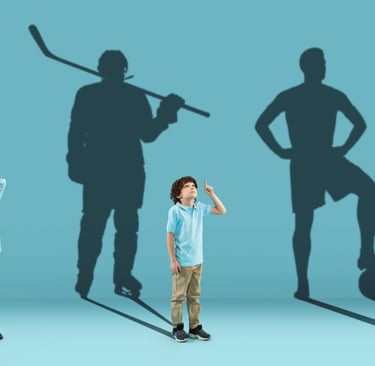"Teeing Up" the Future of Junior Golf: Pedagogy, Social Learning, and a Bit of Magic
Discover the secret to creating effective junior golf programs. Learn how pedagogy, social learning, and community-building can foster a lifelong love of the game. Read now!
TEACHING THE YOUNG GOLFER
Steven Bradley
3/20/20253 min read


As it turns out, the answer lies in a combination of time-tested teaching methods and a deep understanding of how we learn. Enter the Pedagogical Model, a framework that breaks down the learning cycle into five essential phases: engage, explore, explain, elaborate, and evaluate.
But what does this have to do with junior golf, you ask? Everything, it seems. By incorporating the Pedagogical Model into their instruction, junior golf programs can create a learning environment that’s both supportive and engaging. It’s a approach that’s been proven to foster a love of the game that lasts a lifetime — and one that’s been expertly implemented by programs like Little Linksters and, I’m proud to say, my own BirdieBurst Golf program.
At BirdieBurst Golf, we’ve seen firsthand the power of the Pedagogical Model in action. By creating a structured and engaging learning environment, our instructor has been able to help young golfers develop the skills, knowledge, and attitudes necessary to succeed in the game. And with a focus on social learning and community-building, we’ve created a program that’s not just about teaching golf — but about fostering a lifelong love of the game.
This approach is echoed in the work of Albert Bandura, who demonstrated the power of social learning in shaping human behavior and development. By providing opportunities for students to observe, imitate, and model the behaviors of experienced golfers, programs like BirdieBurst Golf and Little Linksters foster a learning environment that’s rich in social interaction and observational learning.
Pedagogy, Social Learning, and a Bit of Magic
By Steven Bradley
As I stepped onto the driving range today — past the mats to play in the dirt — surrounded by a sea of enthusiastic young golfers doing the same, I couldn't help but wonder: what makes junior golf programs truly effective? Is it the latest swing technology? The most charismatic instructors? Or is it something more intangible — a dash of pedagogical magic, perhaps?


I’m in my second semester as a master’s student at Keiser University’s College of Golf, and as part of my learning this week in my appropriately titled course, Teaching the Young Golfer, we were asked to define pedagogy — the art, science, or profession of teaching encompassing the instructional methods, strategies, and techniques used to facilitate student learning and development —and discuss how Bandura’s Social Development Theory may have contributed to the evolution of the junior golf programs and instruction.
As I watched the young golfers today, laughing and learning together, I was struck by the wisdom of Bandura's words: “Learning would be exceedingly laborious, not to mention hazardous, if people had to rely solely on the effects of their own actions to inform them what to do.” In other words, we learn best by observing, imitating, and modeling the behaviors of others — a truth that's at the very heart of both BirdieBurst Golf and Little Linksters.
So what can we learn from programs like BirdieBurst Golf and Little Linksters? For one, that effective junior golf instruction is about more than just teaching the mechanics of the game. It's about creating a supportive, engaging, and inclusive learning environment that fosters a love of the game that lasts a lifetime. And it’s about recognizing the power of social learning in shaping the behaviors and attitudes of our young golfers.
As I left the driving range today, I couldn't help but feel a sense of optimism about the future of junior golf. With programs like BirdieBurst Golf and Little Linksters leading the way, I have no doubt that the next generation of golfers will be equipped with the skills, knowledge, and passion to succeed — both on and off the course.
